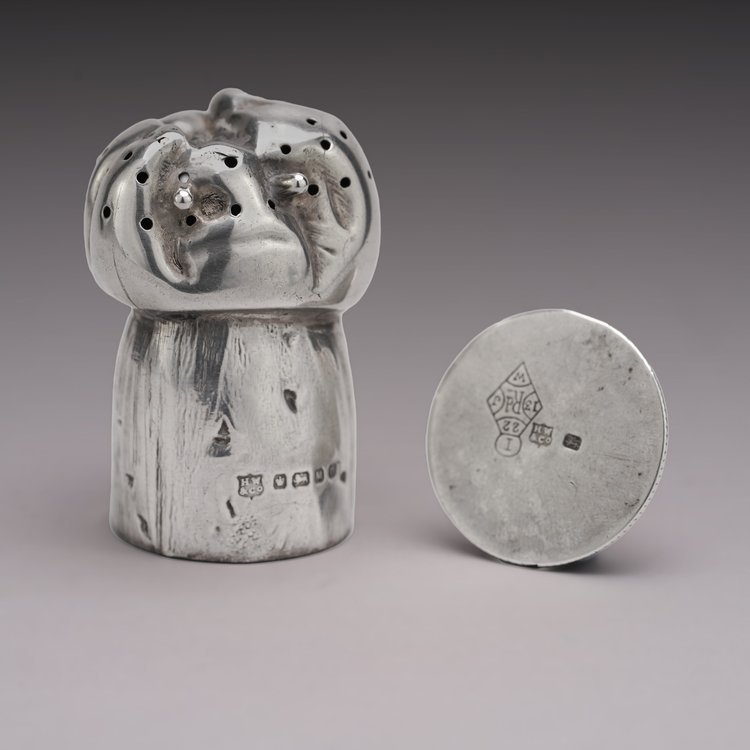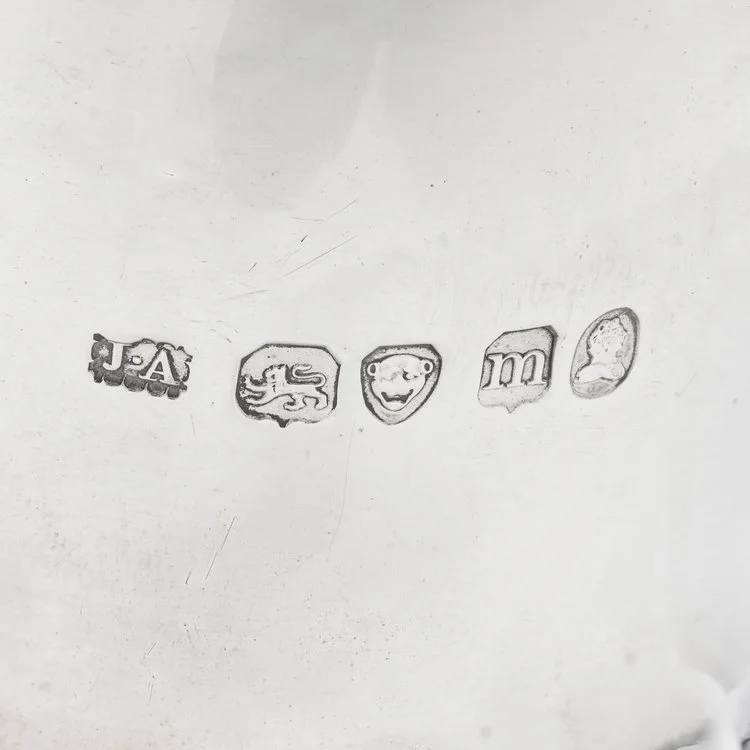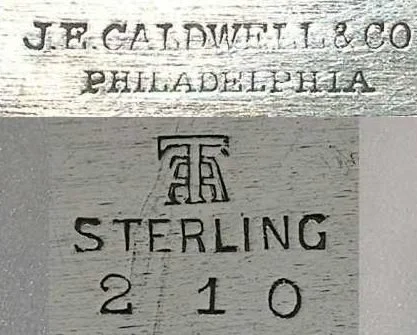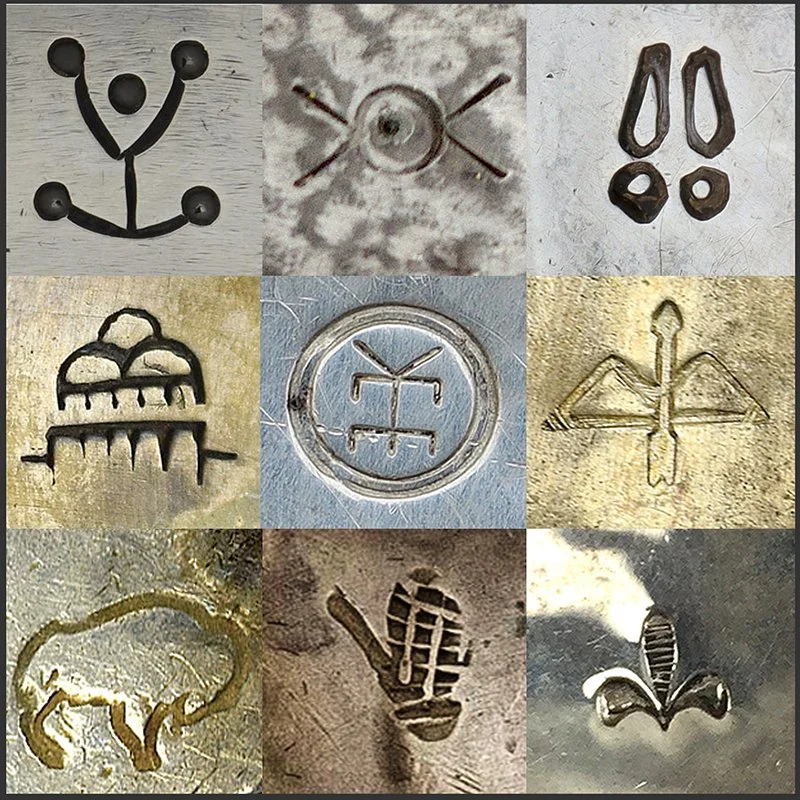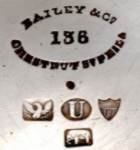How is Silver Hallmarked?
Silver hallmarks are an art form steeped in history and tradition. These tiny symbols, meticulously etched onto silver items, are a testament to the craftsmanship of silversmiths and the pride of nations. Understanding Silver Hallmarks delves deep into the heart of this intricate world, revealing a wealth of information that goes far beyond the surface glimmer of silver.
Antique Victorian novelty pepper in the style of champagne cork, image courtesy of Mozeris Fine Antiques
Origins and Historical Significance
The origins of hallmarks can be traced back to ancient civilizations, where craftsmen marked their creations as a signature of quality and authenticity. Over centuries, these marks evolved from basic symbols to intricate designs, incorporating elements of the culture and aesthetics of the era. In medieval times, guilds regulated the quality of silverware, ensuring that each piece bore the mark of its maker, allowing buyers to identify genuine craftsmanship amidst a sea of imitations.
Evolution of Hallmarks Across Regions
Hallmarks are as diverse as the cultures they represent. The evolution of these marks across regions is a fascinating journey through time. For instance, the British hallmarking system, established in the 14th century, incorporates symbols of the monarchy, city marks, and date letters, creating a comprehensive story within a tiny mark. Similarly, the American assay marks, introduced in the early 19th century, reflect the nation's history, from colonial emblems to patriotic motifs, embodying the spirit of the United States.
British Elegance: Hallmarks from the UK
British hallmarks exemplify unparalleled sophistication and precision in the world of silver craftsmanship. The United Kingdom proudly upholds one of the world's oldest and most comprehensive hallmarking systems. These marks on British silver pieces signify not only the metal's purity but also offer meticulous insights into the maker, the city of origin, and the production year. This meticulous detailing transforms every British silver item into a cherished work of art and a historical artefact, embodying the legacy of British elegance and craftsmanship.
American Craftsmanship: US Hallmarks
American silversmiths often incorporate a blend of regional symbols, historical emblems, and creative motifs into their hallmarks. These marks not only signify the authenticity and quality of the silver but also encapsulate the spirit of American innovation and heritage.
From early colonial influences to symbols representing the American Revolution, US hallmarks are a testament to the nation's journey through history. The eagle, in various forms, is a prominent motif, symbolizing patriotism and freedom.
Understanding American silver hallmarks allows enthusiasts to decipher the unique language of US silversmiths. Each mark tells a story, echoing the diverse influences that have shaped American identity. American hallmarks, therefore, are not just symbols; they are cultural artefacts, capturing the essence of the nation's craftsmanship and historical legacy.
Various American hallmarks, images courtesy of silver collection and medicine man gallery
Continental Europe: A Tapestry of Hallmarks
Europe, a continent steeped in history and cultural diversity, is a treasure trove of distinct silver hallmarking traditions. Among its renowned nations, each boasts a unique hallmarking heritage, offering a fascinating glimpse into their craftsmanship and artistic finesse.
French Hallmarks with Minerva, image courtesy of Mozeris Fine Antiques
French Silver Hallmarks: France, the epitome of sophistication, showcases silver hallmarks that are not just marks but intricate pieces of art. French silver often boasts elaborate designs and ornate patterns, reflecting the country's rich artistic heritage. These marks tell stories of French artistry, with motifs ranging from floral patterns to delicate filigree work, each symbolizing the elegance that France is known for.
German silver hallmarks, image courtesy of Silver Collection
German Silver Hallmarks: German hallmarks are a testament to precision and meticulousness. Characterized by their attention to detail, German silversmiths create marks that are as exacting as the renowned German engineering. These hallmarks often feature precise engravings and geometric patterns, showcasing the nation's commitment to quality craftsmanship. German silver marks are not just symbols; they are representations of German precision and excellence.
S:M in Roman script. Marked underneath with Zecca assay mark M.P, circa 1682-1736, image courtesy of Chiswick auctions
Italian Silver Hallmarks: Italy, a cradle of Renaissance art, infuses its silver hallmarks with the influence of this golden age. Italian silver is adorned with intricate motifs and elaborate engravings, reminiscent of the masterpieces created during the Renaissance period. These hallmarks often feature classical themes, such as Roman architecture and mythological figures, reflecting Italy's rich artistic legacy. Italian silver marks are not just imprints; they are tributes to the country's artistic heritage and creative spirit.
Asian Influences: Hallmarks in Eastern Cultures
Chinese hallmarks on hair ornaments, image courtesy of antiquers
Antique Chinese hallmarks, steeped in centuries-old tradition, offer a fascinating window into the world of ancient craftsmanship. Reflecting the artistry of dynasties gone by, these hallmarks often feature intricate calligraphy and symbolic motifs, telling tales of emperors, myths, and historical events. Chinese silversmiths, revered for their precision, intricately engrave these marks, turning each piece into a testament of ancient mastery. These hallmarks not only authenticate the age of the item but also carry the mystique of China's rich cultural heritage, making them highly coveted treasures for collectors and enthusiasts alike.
Decoding Symbols and Markings
Rampant lion, image courtesy of Alan FR Pulton
Deciphering hallmarks is akin to solving a puzzle. Each symbol, letter, and number has a specific meaning. For instance, a lion rampant often signifies British silver, while a hexagon might indicate French origin. Learning to decode these symbols opens a window into the historical context of each piece. Understanding the language of hallmarks enables enthusiasts to appreciate the stories etched onto silver items, transforming them from mere objects into artefacts with a tale to tell.
French hallmark of Minerva, image courtesy of Osprey Paris
How to Identify Authentic Hallmarks
Identifying authentic hallmarks requires a keen eye and a wealth of knowledge. Reference books and online resources become invaluable tools in this quest. Examining the intricacies of each mark, understanding the subtle differences in design, and cross-referencing with reputable sources are essential steps in authenticating silver items. Recognizing genuine hallmarks not only ensures the quality of the piece but also preserves the integrity of the collector's or buyer's investment.
Modern silver hallmarks, image courtesy of silver hallmark
Hallmarks in Modern Silverware
While the tradition of hallmarking dates back centuries, modern silversmiths continue to honour this heritage. In contemporary silverware, traditional symbols merge seamlessly with innovative designs. Modern artisans often incorporate historical motifs into their creations, paying homage to the craftsmanship of the past while embracing the creativity of the present. Exploring modern hallmarks is a testament to the enduring legacy of this ancient art form.
